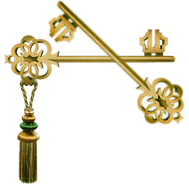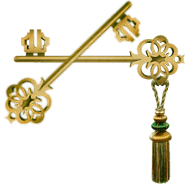
 Pope Gregy XIII LAVINIA FONTANA 1552-1614 May 25, 1572 to Apr. 10, 1585 Gregory succeeded Pope St. Pius V. Before ordination he led a loose life, but amended his conduct when he became a priest. In fact he was known for his piety. One of his accomplishments was the improved seminary training for diocesan priests. He himself founded or substantially contributed to twenty-three seminaries. The controversy for which Protestants assailed him and is still used today to disparage the papacy was an incident involving the Huguenots, French Protestants. This is what happened: Political circumstances of the time had made the papacy dangerously dependent on Spanish influence. The Spanish royal government was one of the few absolutely orthodox governments in Europe. Further France was rent with civil war between the Catholics and the Protestant Huguenots. The Catholic party was organized into a Catholic league which enjoyed Spanish support. Unfortunately it was clear that the Spanish government was not moved solely by religious considerations but was determined to exploit the weakness of its once formidable rival. The two parties in France had come to an uneasy truce when a group of Catholics took the occasion of the presence in Paris of many of the leaders of the Huguenot party (for the marriage of Henry of Navarre to a French princess) to undertake a kind of mass assassination, known as the Massacre of St. Bartholomew since it took place on that Saint's day. It is unlikely that the massacre was entirely premeditated. The Pope was given a wholly misleading account of events. Under the impression that an attempt to seize power by the Huguenots had been prevented he ordered public rejoicing in Rome. Unfortunately this looked like papal approval of the massacre and was much used by Protestant propagandists. In fact the Pope did not approve of the cruelty of the leaders of the Catholic League but unfortunately he made no public protest. Gregory had hopes of the reconciliation of Sweden. John III of Sweden had married a Polish princess who was a Catholic. Under her influence King John submitted to Rome. He was not prepared to allow the resumption of communion between the Swedish Church and Rome to cause political trouble. Gregory, in a most statesmanlike way, abandoned all claims to the sequestrated church property although this would have impoverished the Swedish Church. Unfortunately John III's conversion was not very deep and he reverted to Lutheranism. His son was, however, brought up a sincere Catholic but was later driven from Sweden because of his faith. In political matters Gregory's pontificate was not distinguished but in other spheres he was a true leader of the Catholic reform. Perhaps most important was the enormously enhanced prestige the Holy See was gaining under a series of popes of respectable life. In 1572 the Venetian ambassador remarked that nothing had done more for the good of the Church than this succession of popes of irreproachable life. Gregory also worked tirelessly for the completion of the work of the Council of Trent. He gave generously to the Roman College -he was reckoned its second founder- the nucleus of the university now called the Gregorian University. He also founded the German and English Colleges. All graphic accessories on this page copyrighted by Catholic Tradition.  Contact
Us- Contact
Us- TRADITION-----------------GALLERIES----------------------THE PAPACY www.catholictradition.org/Papacy/papal-gallery58.htm |